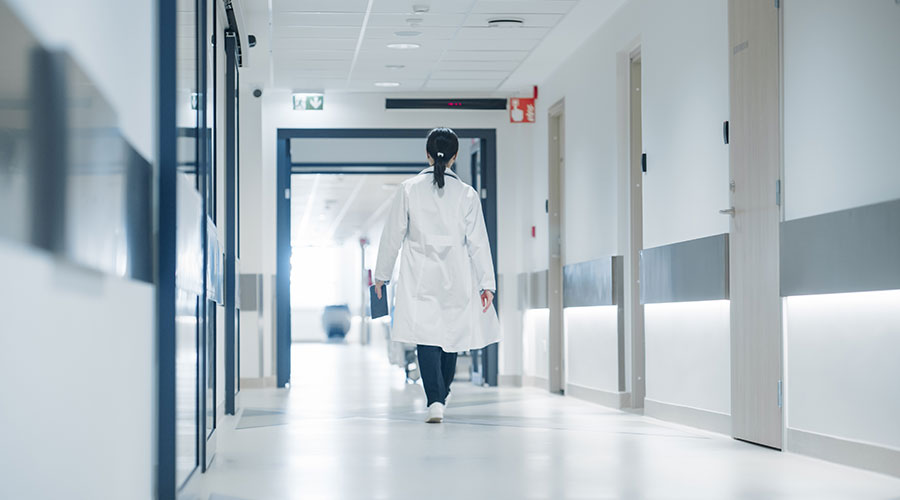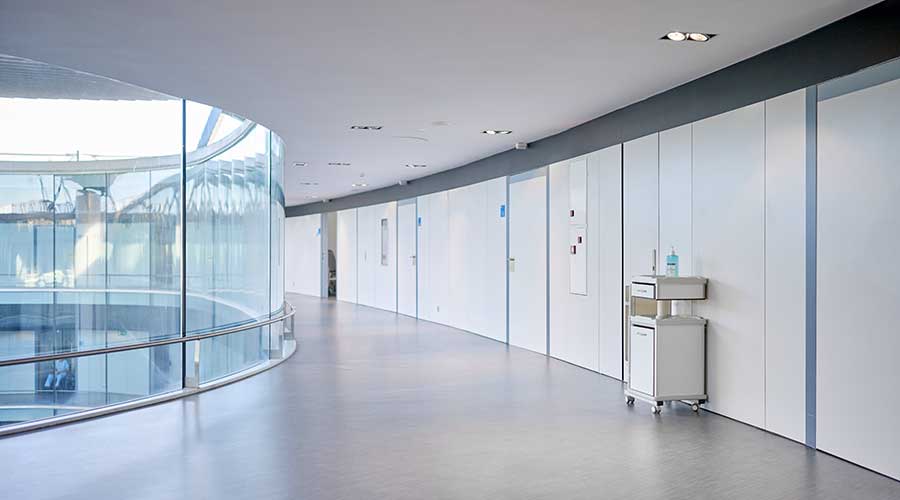It’s hard to focus on the present when conversations surrounding the future are constantly in the zeitgeist. Whether it be with work or personal life, many people are putting together a five-year plan. Companies are no different when it comes to planning for the future. Leaders in all industries have goals that they would like to reach. This is especially apparent in healthcare as individuals strive for advancements in order to provide the best care for patients.
Several healthcare entities have slated new facilities within their five-year plan. As the industry continues to evolve, hospitals and other healthcare facilities need to remain current so that they can continue to uphold quality patient care and their own brand reputation. New buildings won’t stay new forever, so designers need to approach buildings with the future in mind.
Healthcare Facilities Today recently spoke with Kathy A. LaGro, principal of Arcadis on how designers can work with facility managers to create future-proof buildings.
HFT: How do you see healthcare design evolving over the next 10–20 years?
Kathy A. LaGro: Over the next 10-20 years, healthcare design will continue to evolve with significant investments in hospital infrastructure and an increasing focus on outpatient and specialty care centers. We can expect to see more use of computational design and AI to optimize planning, making facilities more efficient, adaptable, and responsive to patient needs.
Related Content: How to Future-Proof Healthcare Facilities for EV Charging Integration
HFT: What emerging design trends are shaping the future of hospitals and medical facilities?
LaGro: One of the biggest trends that is shaping the future of hospitals is the continued shift toward a more hospitality-inspired aesthetic. Modern, clean layouts with high-quality, cost-effective materials are becoming the norm. Features like daylighting, biophilia, private rooms, and intuitive wayfinding will become more of a standard. Integrating more technology will further enhance the customer experience by improving service and ease of navigation.
HFT: How are you addressing the growing demand for flexible, multi-use healthcare spaces?
LaGro: Flexibility is key in modern healthcare design. We focus on modular design and adaptable layouts to accommodate emerging medical technologies and evolving patient needs. As telemedicine becomes more prevalent in patient care, modular Zoom rooms offer privacy and flexibility. These spaces support collaboration in high-traffic areas and can be adapted for future needs.
HFT: How do you balance energy efficiency with the high power demands of healthcare buildings?
LaGro: Sustainability remains a central focus, with many healthcare institutions adopting green building practices to meet evolving regulations and reduce their environmental footprint. Balancing energy efficiency with high power demands requires smart solutions. To do this, we incorporate advanced HVAC systems and intelligent building controls to optimize energy use while maintaining consistent performance. For example, more healthcare institutions, such as UCSD and UCLA, are requiring LEED certification and adopting sustainable practices aligned with California’s Green Building Code.
Mackenna Moralez is the associate editor of the facilities market and the host of the Facilities in Focus podcast.

 Yale New Haven Health Experiences Data Breach
Yale New Haven Health Experiences Data Breach Rethinking Facilities: A New-Generation Approach to Behavioral Healthcare
Rethinking Facilities: A New-Generation Approach to Behavioral Healthcare ThedaCare to Open Medical Center in Fond du Lac, Wisconsin
ThedaCare to Open Medical Center in Fond du Lac, Wisconsin UF Health Hospitals Rely on Green Globes to Realize Their Full Potential
UF Health Hospitals Rely on Green Globes to Realize Their Full Potential